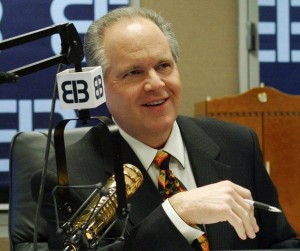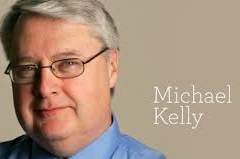Rush to Judgement on Katrina
Prior to Hurricane Katrina, I had never heard of C. Ray Nagan or Nola.com. This from a man who prided himself on being up to date on current affairs and almanac-like data. However, the Times-Picayune was previously familiar to me, and since Katrina I have been a very frequent visitor to its online destination Nola.com. While surfing Nola.com yesterday,  a Bruce Alpert ‘On the Hill’ story headline caught my eyes; “Rush Limbaugh calls Katrina response very effective…” The following is an excerpt from Mr. Alpert’s article, which I believe came from a recent Rush Limbaugh Show transcript:
a Bruce Alpert ‘On the Hill’ story headline caught my eyes; “Rush Limbaugh calls Katrina response very effective…” The following is an excerpt from Mr. Alpert’s article, which I believe came from a recent Rush Limbaugh Show transcript:
“The FEMA U.S. government response, to Katrina, was one of the most massive, one of the fastest, and one of the most effective emergency responses in our history.
Go, independently verify that, if you doubt me. I imagine even some of you in the audience who would call yourselves conservative Republicans are saying, ‘Rush, be careful now, you know that’s not true.’
You probably think it’s not true because you believe, it’s been stated for so long, it’s been the conventional wisdom for so long, that the post-Katrina response was a disaster, and it wasn’t.”
The substance of the entire article had less to do with New Orleans, and more to do with the GOP’s talking points strategy on how Pres. Obama is handling the current Mexican-US Border humanitarian-political crisis. I don’t follow Rush Limbaugh or his show like I do Nola.com. Even so, unlike most of the people I know, I will fight for his right to speak his mind. The day Mr. Limbaugh is silenced is the day “they” silence me. Lord knows I have a documentation, an opinion or two, and many views of my own; albeit a very small audience to date.
Nevertheless, anyone who knows me could understand why my jaw dropped after reading the aforementioned Bruce Albert article. Based on my nine years of intense research, I concur wholeheartedly with Mr. Limbaugh’s Katrina Response theory. He and I actually agree on the same thing; the real story of the response to the second biggest domestic crisis of the 21st Century has never been told.
One may say the story was told eight years ago in HBO’s award-winning documentary, When The Levees Broke (2006). I am a longtime fan of its director, and I enjoyed watching his four-part requiem. The nation and the world needed something of substance to help them understand what had happened in New Orleans. It focused mostly on Louisiana Democratic political leaders and the Greater New Orleans Katrina survivors; the people. It was real.
My research delves into two major components of Katrina that has yet to be broadcasted or published; the significant inclusion of the responders experiences and the placing of the first week of Katrina events in their proper sequence.
Over the past nine years I have granted only one interview, which was exactly five years ago to date. The Omaha World-Herald Columnist Mike Kelly wrote a piece titled, “Take another look at hurricane’s aftermath.” Here is an excerpt from Kelly’s July 12, 2009,  col-umn about me:
col-umn about me:
“Brownie, you’re doing a heck of a job,” President George W. Bush told FEMA director Michael Brown in the aftermath of Hurricane Katrina.
Brown, under mounting criticism, soon resigned as head of the Federal Emergency Management Agency. The federal response to Katrina was widely panned and the president’s praise of Brownie was often ridiculed.
Omaha native who has spent most of the past four years in New Orleans is asking that people take another look.
“George Bush got blamed for something that wasn’t his fault,” said Michael Woods. “I’ve interviewed thousands of people and pieced together this big puzzle.”
Five years ago, hmm. Well Mr. Kelly, all I can say is that ‘puzzle’ got bigger and bigger. My recent blog ‘Groundhog Day ja Voo‘ should bring everyone up to speed; a posting summarizing the past five years of my nonprofit independent research project. Have no fear, I kept on piecing things together.
Getting back to Mr. Limbaugh’s bold statement on Katrina for even conservative GOP standards. If you really pay attention to what he stated in the above (transcript) excerpt, a reasonable person may think that he has no proof; that he is wishing it to be so. He offers no documentation, no sources; how did he put it, “Go, independently verify that, if you doubt me.” Go where and independently verify that Mr. Limbaugh?
Here at TheContraflow.org, that’s where! This is exactly what I have been working on for nine years, independent verification; independent of any government, corporate, collegiate or media interests. I am Mr. Limbaugh’s source of proof that the federal government dropping the ball during Katrina is not what happened. He just doesn’t know it yet. I’m the nation’s source of proof. The country just doesn’t know it yet. The New Orleans Katrina survivors? They’ve always known who really dropped the ball. They just haven’t had anyone to articulate it yet.
It was those heart-breaking images from the New Orleans Morial Convention Center on September 1, 2005, that changed everything; that literally changed the world. The media, government officials, scholars and scientists have never been able to fully explain what we were looking at that day; how those sad, shocking and surreal images really came to be. I provide credible information in my essay from two years ago, ‘The Events of 9/1‘. A good place to start on the road to really understanding the Hurricane Katrina Response.
Since arriving in the mega disaster zone called New Orleans nine years ago, there are so many things I thought I would never be doing. Indirectly helping to prove a Rush Limbaugh theory about the ridiculing of Pres. Bush during Katrina, that he is using to help ridicule Pres. Obama about a current immigration issue, ranks in the Top 5. But it is what it is. I did this research for everyone, whatever their politics or views. The truth is in the light.
I spoke earlier about my audience size. I likened this to the saying, “If a tree falls in the woods and no one is there to here it, does it make a sound?” What I am saying is that I, Mr. Woods, have been inspired by the most unlikely source to finally start speaking publicly about all I have learned on the subject of the Katrina Response.  Thank you Mr. Limbaugh. I never had a policy of not speaking publicly. It’s just that the research kept going and going (2005-2014), like that old Energizer Bunny Rabbit commercial. Maybe I could return the favor by enlightening your listeners. It’s hard to imagine a bigger audience than yours. I would start off by saying the following:
Thank you Mr. Limbaugh. I never had a policy of not speaking publicly. It’s just that the research kept going and going (2005-2014), like that old Energizer Bunny Rabbit commercial. Maybe I could return the favor by enlightening your listeners. It’s hard to imagine a bigger audience than yours. I would start off by saying the following:
“A command decision based off a rumor that was relayed to New Orleans Mayor Nagin on Wednesday evening, Day 3, August 31, 2005, set in motion a sequence of events that transformed Katrina from a mega natural disaster to a mega man-made disaster.”
The reason I have been successful in getting people from all walks of life, from all corners of America, to share their Katrina experiences with me is because they felt my genuine drive to tell the real story of Katrina. And that no matter how long it would take, I was going to get their stories out intact; that I was going to keep my promise to publish CONTRAFLOW Book Series void of blame, race-carding, political agendas, demographic stereotyping, media sensation-alism and my own opinions. CONTRAFLOW is dedicated to ALL Katrina Responders.
M. Darryl Woods, Lead Researcher
The Contraflow Project





















TCP Responses